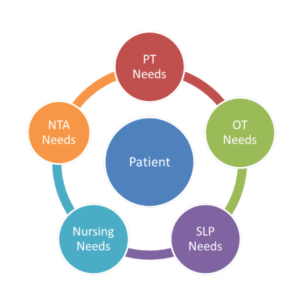Report: Location plays a role in readmission rates
Hospitals nationwide are struggling to keep seniors from returning to the emergency room, and when it comes to hospital readmisson rates, location matters. A Robert Wood Johnson Foundation report released today noted sweeping differences in readmission rates between urban and rural regions, and between large cities and smaller ones.
In 2010 the non-surgical 30-day readmission rates were 17.8 percent in the Detroit referral region, but only 13.6 percent in most of New Mexico, including Albuquerque, according to the report’s interactive map data. Surgical readmissions saw an even wider geographic differential, with percentages as high as 17.4 in the White Plains, New York region and as low as 7.6 percent in the Bend, Oregon region—well below the 2010 national average of 12.4 percent. Most of the Rocky Mountain states and Pacific northwest are between 8 and 10 percent for surgical readmissions, while the south-central states of Arkanas, Kentucky, Tennessee and West Virginia struggle with readmission rates of between 12 and 14 percent.
Nationwide, hospitals made little progress on reducing readmission rates between 2008 and 2010, the study found. The number of seniors who were readmitted for non-surgical reasons dropped less than one percent during the span, while surgical readmissions basically remained steady.
The lack of progress between 2008 and 2010 places new emphasis on the penalty rules for excessive readmissions, beginning in October 2012. The report also has prompted healthcare leaders to examine why the regional differences exist and what other factors may be impeding success on reducing readmissions. Many seniors, for example, have difficulty understanding their discharge instructions, handling their medications and keeping their followup appointments, the Associated Press noted.
The report’s findings were based on data from the Dartmouth Atlas of Health Care.

Pamela Tabar was editor-in-chief of I Advance Senior Care from 2013-2018. She has worked as a writer and editor for healthcare business media since 1998, including as News Editor of Healthcare Informatics. She has a master’s degree in journalism from Kent State University and a master’s degree in English from the University of York, England.
Related Articles
Topics: Accountable Care Organizations (ACOs) , Advocacy , Executive Leadership , Medicare/Medicaid , Regulatory Compliance










